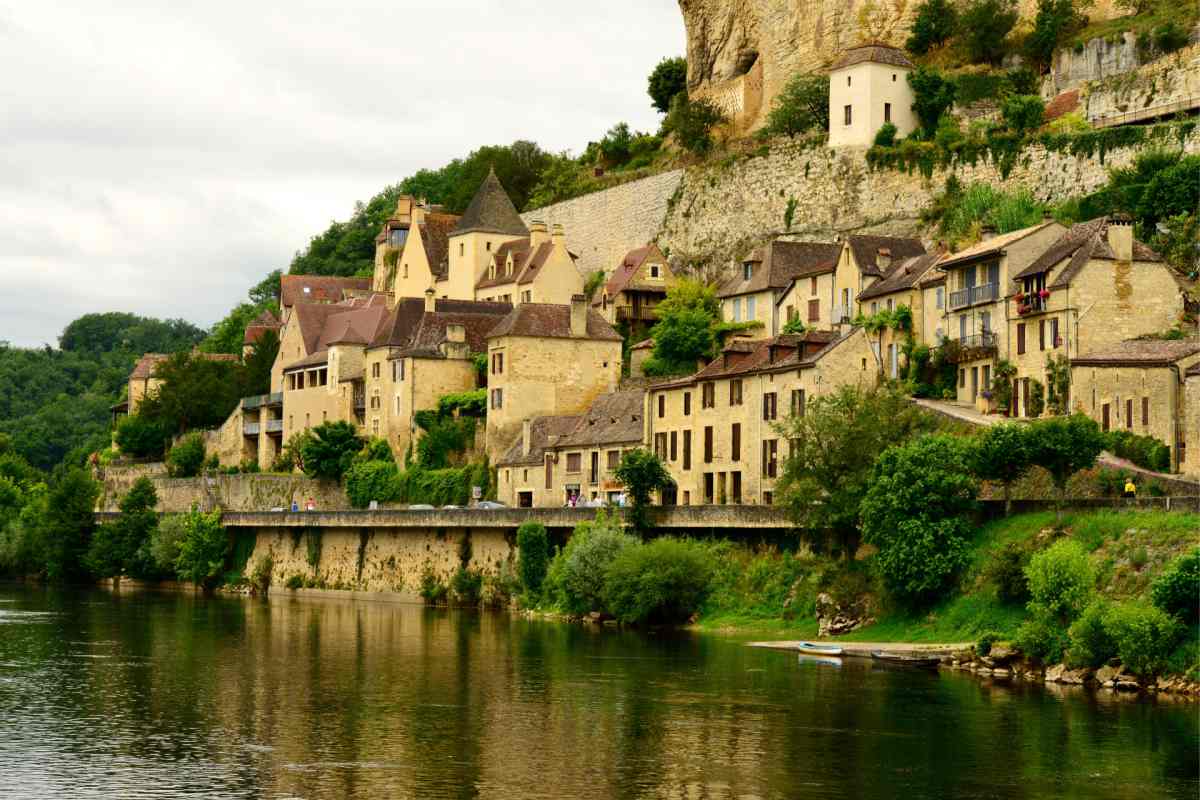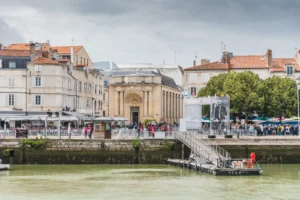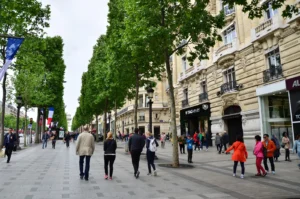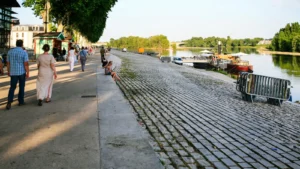Dordogne is not just another region on the map of southwestern France. It’s where limestone cliffs meet fortified castles, prehistoric art hides in shadowy caves, and time seems to slow around every river bend. For those curious about what to see in Dordogne, this region offers something more profound than a mere checklist of attractions—a living archive of French heritage layered into the villages, valleys, and vineyards that define it.
Travelers often arrive curious but leave transformed. The problem isn’t finding something to do here—it’s knowing where to begin. With hundreds of sites spread across rural terrain and little centralized guidance, many visitors struggle to uncover Dordogne’s most meaningful experiences. For ideas that go beyond the guidebooks, explore our curated list of What to Do in France—from hidden countryside gems to authentic regional highlights.
This guide was created to change that. It highlights not just what to see, but why each place matters, how it fits into a trip that feels immersive, not rushed, and how to avoid the common pitfalls that frustrate many along the way.
What to See in Dordogne: Top Historic Sites to Visit
Dordogne’s castles and chateaux are scenic landmarks and historical anchors shaped by centuries of conflict, nobility, and regional identity. The area’s feudal past left behind remarkably well-preserved structures that reflect its political and architectural evolution. For those seeking more than surface-level sightseeing, the following sites offer deep historical value, practical accessibility, and lasting impact.
Château de Lasfonds: Private Estate with Rich Renaissance Character
French Castles. Photo from Chateau de Lasfonds.
In southwest France, near Angoulême, on the border of Charente and Dordogne in the Nouvelle-Aquitaine region, Château de Lasfonds offers an immersive private stay in a restored 16th-century Renaissance estate. Available exclusively for rental, the château accommodates up to 20 guests, making it ideal for extended families, weddings, or retreats.
Set on 6.5 hectares of private countryside, the estate combines historic architecture—stone walls, timber beams, and antique fireplaces—with modern amenities, including luxury bathrooms, a chef’s kitchen, and high-speed internet. Though secluded, it’s well-positioned for day trips to Dordogne’s most celebrated sites, including Sarlat, Lascaux IV.
More than a place to stay, Lasfonds offers a true sense of place. Guests can relax, cook with local ingredients, wander oak-lined paths, and reconnect under expansive skies. It’s a refined, peaceful alternative to conventional lodging—rich in privacy, culture, and atmosphere. If you’re weighing your accommodation options, consider the difference between a standard Holiday Villa and a stay in a historic estate like Lasfonds.
Book your stay at Château de Lasfonds to experience understated luxury and timeless French charm in one of the region’s most exclusive countryside settings.
Château de Beynac: A Strategic Stronghold Overlooking the River
Perched on a 150-meter cliff above the Dordogne River, Château de Beynac was built in 1115 and was a major French stronghold during the Hundred Years’ War. Positioned directly opposite Castelnaud, it frequently exchanged hands between French and English forces.
Visitors enter through a fortified barbican and explore Romanesque towers, a 13th-century keep, and a chapel with fading medieval frescoes. Key features include a functioning drawbridge and sweeping views that reach as far as Château de Marqueyssac. The castle is open year-round, with multilingual panels and self-guided tours lasting 60–90 minutes.
Château de Castelnaud: Museum of Medieval Warfare
Built in the 12th century and later held by English forces, Château de Castelnaud overlooks the Dordogne River from Castelnaud-la-Chapelle, directly facing its historic rival, Beynac. Today, it operates as the Museum of Medieval Warfare, showcasing over 250 original and replica weapons.
Highlights include siege engines like trebuchets and mangonels—some demonstrated during seasonal events—and crossbows, armor, and models of 14th—and 15th-century military tactics. Exhibits are arranged chronologically, and guided tours are available in English and French. The ramparts offer expansive views of the valley, and family-friendly programs run throughout the year.
Château des Milandes: The Legacy of Josephine Baker
Built in 1489 as a Renaissance manor, Château des Milandes gained international fame in 1947 when Josephine Baker, an American-born entertainer, Resistance agent, and civil rights icon, purchased it.
Today, it houses a biographical museum featuring Baker’s costumes, Resistance medals, letters, photographs, restored rooms, and landscaped gardens. Seasonal falconry shows take place on-site. Audio guides are offered in six languages, and visits typically last 90 minutes. The museum is widely praised for its emotional impact and accessibility.
Château de Hautefort: From Medieval Fortress to Baroque Estate
Near Périgueux, Château de Hautefort was built on a 10th-century fortress site and transformed in the 17th century into a Baroque residence under the Marquis de Hautefort. Its elegant design, credited to architect Nicolas Rambourg, contrasts sharply with the region’s defensive castles.
The château is surrounded by 19th-century formal gardens featuring geometric hedges, topiary, and a scenic esplanade. Inside are richly furnished salons, a library, and a chapel with stained glass. Open from spring through autumn, the site also hosts rotating art and restoration exhibitions and a hospital museum focused on rural medical history.
Discover Dordogne’s Prehistoric Wonders
Dordogne is home to some of Europe’s most significant Paleolithic sites. Along the Vézère River, limestone caves preserve symbolic art and ritual created by Cro-Magnon humans over 17,000 years ago. These are not just archaeological sites—they offer direct insight into early human expression.
Some caves remain protected and allow limited access, while others use advanced replicas to balance conservation with education. The following three sites represent the region’s most essential and accessible prehistoric experiences.
Lascaux IV – International Centre for Cave Art
Located in Montignac, Lascaux IV is a precise, full-scale replica of the original Lascaux Cave, which has been closed since 1963 to protect its prehistoric art. Opened in 2016, the center recreates the cave’s surface textures, pigments, and layout, showcasing vivid depictions of bulls, deer, and abstract symbols from the Magdalenian period (c. 17,000 years ago).
The guided tour—offered in multiple languages—mimics the original cave’s lighting and acoustics. The adjoining museum includes interactive displays, digital reconstructions, and VR exhibits exploring Paleolithic art and ritual. Visits are timed; booking is strongly recommended. The site is fully accessible and visitor-friendly year-round.
Rouffignac Cave
Near Les Eyzies-de-Tayac, Rouffignac Cave spans over eight kilometers and contains original Paleolithic art, including more than 150 mammoth engravings and drawings dating back around 13,000 years. Other animals depicted include bison, ibex, and woolly rhinoceroses.
Visitors explore the cave by electric train, making it one of the most accessible prehistoric sites in Dordogne. The journey includes expert commentary and designated stops to explain engraving techniques and historical context. Photography is prohibited, and tours are in French, with printed guides available in other languages. Daily visitor numbers are limited for conservation.
Font-de-Gaume
Located in Les Eyzies, Font-de-Gaume is one of the few caves where visitors can still view original, polychrome Paleolithic paintings. Dating to around 14,000 BCE, the cave features over 200 figures, including bison, horses, and reindeer painted directly onto irregular rock surfaces.
Due to its fragile environment, entry is strictly limited. Tickets must be reserved in person, and early arrival is crucial, especially during high season. Guided tours lead small groups into narrow chambers, where the artwork is revealed gradually under soft lighting. There are no replicas or digital aids—only the original paintings in their natural setting.
Most Beautiful Villages in Dordogne
Dordogne boasts several officially recognized “Les Plus Beaux Villages de France,” celebrated not just for their beauty but also for their harmony of architecture, setting, and heritage. Many are perched above rivers or nestled in wooded valleys, shaped by generations of local craftsmanship. For those drawn to slower travel and rich character, these villages offer some of Dordogne’s most rewarding experiences.
La Roque-Gageac: A Riverside Village Built Into the Cliff
Photo on unlimphotos. Village of Roque-Gageac in Dordogne
Built directly into a cliff above the Dordogne River, La Roque-Gageac is both a geological marvel and a historic village. Its ochre-toned houses form a single riverside row, with stone steps leading to troglodyte dwellings and medieval ruins.
Gabarre boat tours offer scenic views from the water, echoing the routes of medieval traders. A tropical garden at the cliff’s base adds unexpected color. Parking is at the southern edge, and early morning visits are best during peak months to avoid road congestion.
Domme: A Hilltop Bastide with Panoramic Views
Founded in 1281 by King Philip the Bold as a fortified bastide, Domme sits high above the Dordogne River, offering sweeping views of the valley below. This golden-stone village charms tourists with its cobbled streets, preserved ramparts, and rich Templar history. Perfect for a scenic stroll or a relaxing café stop, Domme blends medieval character with breathtaking natural beauty.
Beynac-et-Cazenac: A Stone Village at the Foot of a Fortress
Photo from unlimphotos. Chateau de beynac, castle, dordogne
At the base of the imposing Château de Beynac, the village of Beynac-et-Cazenac clings to the hillside in narrow, cobbled lanes that rise steeply toward the fortress. The architecture is defined by pale limestone houses with steep lauze stone roofs, many dating back to the 15th and 16th centuries.
Canoe rentals, boat tours, and walking paths along the riverbank all start within short walking distance. In the quieter streets higher up, artists and photographers often gather to capture the texture of the buildings and the sweeping views of the valley.
Saint-Léon-sur-Vézère: A Quiet Village Along the Prehistoric Corridor
Tucked along the Vézère River, Saint-Léon-sur-Vézère is a peaceful gem in the heart of the Vézère Valley, a UNESCO-listed area known for its concentration of prehistoric sites. The village features Romanesque architecture, including a 12th-century church, La Roque Saint-Christophe, a former troglodyte fortress, and a small château, Maison Forte de Reignac, all set against a backdrop of lush greenery. It’s an ideal stop for tourists exploring the nearby Lascaux caves or the National Museum of Prehistory in Les Eyzies.
Dordogne River Activities & Scenic Routes
Photo on unlimphotos. View of Dordogne river near Beynac-et-Cazenac
The Dordogne River has long shaped the region’s landscape, economy, and identity. As one of the few undammed rivers in France, its clear waters flow past castles, vineyards, and villages. For travelers, it offers stunning views and direct access to some of the region’s most memorable experiences, many of which are unreachable by road.
Canoeing and Kayaking
Canoeing is one of the best ways to explore the Dordogne Valley. Rental services are available in towns like La Roque-Gageac, Beynac, Vitrac, and Castelnaud. Routes range from short to full-day excursions, typically downstream with shuttle transport back.
Paddling beneath castles and cliffside villages offers a perspective once seen only by medieval travelers. The current is mild, suitable for beginners, and the river features gravel beaches ideal for breaks. Rentals include barrels, vests, and paddles. While no guide is needed, tours are available. May to September is the best season, especially early mornings, for quiet waters.
River Cruises and Gabarres
Traditional gabarres—flat-bottomed boats once used for river trade—now run 50-minute sightseeing cruises from La Roque-Gageac and Beynac. These guided trips follow historic routes toward Bordeaux, passing medieval bridges and limestone cliffs.
Tours are in French, with English brochures or guides often available. Cruises operate from April to October; booking is recommended during peak months.
Cycling and Hiking
Dordogne’s river valley features well-marked cycling and walking trails, often tracing old towpaths and rural lanes. The Véloroute Vallée de la Dordogne links towns like Sarlat, Domme, and Castelnaud, offering riverside views and gentle climbs through farmland.
Bike rentals—electric or standard—are available in Sarlat, Carsac-Aillac, and nearby hubs. Trails are graded by difficulty and include picnic areas and scenic viewpoints. Hikers can follow the GR64 or local loops around Domme, Montfort, and Saint-Cyprien, passing chapels, walnut groves, and quiet stone farms.
Local Markets & Culinary Highlights
Dordogne’s cuisine is central to its identity, rooted in local ingredients like black truffles, walnuts, and duck. Weekly markets and village eateries reflect traditions shaped by land and season. For travelers seeking cultural immersion, food in Périgord Noir offers a direct, flavorful connection to the region’s heritage and way of life.
Sarlat Market: The Epicenter of Périgord Flavors
Photo on unlimphotos. Sarlat-la-Caneda, France
Held on Wednesdays and Saturdays, the Sarlat-la-Canéda market fills the town’s medieval center with stalls offering Périgord truffles (in season), foie gras, walnut oil, duck products, cheeses, pastries, and local wines.
Saturday is the busiest, while Wednesday offers a quieter, more personal experience. A winter truffle market draws chefs and collectors. Streets close to traffic on market days, so parking outside the old town is advised.
What to Eat in Dordogne: Regional Dishes Worth Seeking Out
Photo from unlimphotos. French cuisine: Different types of cheese, wine, and other ingredients
The cuisine of Dordogne blends rustic simplicity with refined technique. Everyday dishes reflect the ingredients in their forests, rivers, and farms. Some of the most distinct and traditional options include:
- Magret de canard: Duck breast, usually grilled or pan-seared, often served with roasted potatoes or mushrooms sautéed in duck fat.
- Confit de canard: Slow-cooked duck leg, preserved in its own fat, then crisped before serving.
- Cabécou: A soft goat cheese made from raw milk, often served with warm bread or on salads.
- Pommes sarladaises: Potatoes sautéed in duck fat with garlic and parsley—a side dish on nearly every local menu.
- Truffade: A winter dish featuring sliced potatoes, truffles, and sometimes cheese, traditionally cooked in a clay pot.
- Walnut tart (tarte aux noix): A rich dessert highlighting one of the region’s most important agricultural exports.
These dishes are best enjoyed at local bistros, family-run auberges, and farmhouse restaurants known as fermes-auberges. Many of these offer set menus based on what’s in season. To time your visit with some of the region’s best seasonal experiences, don’t miss our roundup of upcoming French Food Festivals.
Dordogne Wines and Where to Taste Them
Though often overshadowed by Bordeaux, the Bergerac wine region in southern Dordogne produces excellent reds, whites, and dessert wines at more accessible prices. Notable appellations include Pécharment, Monbazillac, and Saussignac.
Monbazillac, a golden dessert wine made from botrytized grapes, rivals Sauternes but is less commercialized. Vineyards near Bergerac welcome walk-ins for tastings and tours, with many offering direct sales. Those with extra time can explore the Route des Vins de Bergerac, which includes over 150 domaines, some with on-site lodging and cooking classes.
Unique Museums and Cultural Sites
Dordogne’s heritage extends beyond castles and caves. The region hosts a range of small, insightful museums that explore everything from prehistoric life and medieval fortifications to culinary traditions and rural craftsmanship. These focused spaces offer meaningful depth without the crowds.
National Museum of Prehistory – Les Eyzies
Set beneath a cliff in Les Eyzies, the Musée National de Préhistoire is France’s leading Paleolithic museum. It holds over 18,000 artifacts, including tools, carvings, and ornaments from sites like La Madeleine and La Micoque.
Exhibits trace 400,000 years of human history in the Vézère Valley, with panels in French and English. Temporary shows rotate annually, and the museum collaborates on active field research. Open year-round, it’s best paired with nearby caves like Font-de-Gaume or Combarelles.
Maison Forte de Reignac
Photo on unlimphotos. Maison forte de Reignac dordogne perigord France
Located 5 km from Les Eyzies, Maison Forte de Reignac is a rare cliffside château-fort, built in the 14th century and inhabited until the 20th century. Carved into a limestone wall, it combines natural rock with fortified living quarters stacked vertically along the cliff.
Inside are furnished rooms, a chapel, a prison, and a museum focused on medieval torture (recommended for mature visitors). The site’s dramatic architecture makes it especially appealing to photographers and history enthusiasts. It is privately run and open from spring to autumn, with both guided and self-guided tours available.
Musée du Foie Gras
In a region where foie gras is traditional, two museums—one in Thiviers, the other in Frespech—offer insight into its production, history, and cultural debate. Exhibits feature interactive displays, vintage tools, and videos that trace the process from feeding to preservation.
Tastings are often included, paired with local wines or walnut products. The Frespech location also has a small farm, seasonal demos, and workshops. These museums appeal to those interested in gastronomy, rural heritage, or ethical food production.
Best Itinerary Ideas for Different Types of Travelers
Photo on unlimphotos. Medieval house in Sarlat, Dordogne region, France
Dordogne’s spread-out attractions can make trip planning tricky. Many visitors misjudge travel times or try to fit in too much. These sample itineraries help travelers explore the region at a manageable pace, whether focusing on highlights, cultural depth, or family-friendly experiences.
3-Day Highlights Tour: A Balanced First-Time Introduction
- Day 1 – Sarlat-la-Canéda and Château de Beynac: Start in Sarlat, Dordogne’s best-preserved medieval town. Explore its historic center in the morning, then visit Château de Beynac for panoramic river views and a self-guided tour. Overnight in Sarlat.
- Day 2—La Roque-Gageac and Canoe Ride: Explore La Roque-Gageac early on foot. In the afternoon, paddle from Vitrac to Beynac, passing castles along the river. Return by shuttle and enjoy dinner by the water. Overnight in Domme or nearby.
- Day 3—Lascaux IV and Montignac: Visit the high-tech Lascaux IV Centre in Montignac, then explore the town’s historic streets. Depart in the evening or continue toward Bergerac.
5–7 Day Cultural and Culinary Immersion
This itinerary allows for slower travel and deeper engagement with Dordogne’s rural culture and food traditions.
- Day 1–2: Stay in Château de Lasfonds or a countryside guesthouse near Sarlat. Explore Sarlat’s market and dine at a local bistro.
- Day 3: Visit Font-de-Gaume and the Prehistory Museum in Les Eyzies. Return via scenic drive through the Vézère Valley.
- Day 4: Spend the day in Domme, including its hilltop cave system and panoramic terraces. Enjoy a vineyard lunch in the Bergerac wine region.
- Day 5–6: Take a half-day cooking class in a local kitchen or farmhouse. Visit walnut groves, duck farms, or a foie gras museum.
- Day 7: Wrap up with a peaceful hike or bike ride along the Dordogne Valley trail, followed by a farewell dinner featuring regional specialties.
Family-Friendly Dordogne Plan: Education, Nature, and Simplicity
- Day 1: Visit Maison Forte de Reignac for an interactive mix of history and architecture. Spend the afternoon in Saint-Léon-sur-Vézère, where kids can enjoy the riverside.
- Day 2: Take the electric train tour of Rouffignac Cave, perfect for families. Pack a picnic to enjoy in shaded areas nearby.
- Day 3: Explore Castelnaud Castle, known for its medieval weapons and kid-friendly demos. Then, take a barre boat ride from La Roque-Gageac.
Most towns offer family lodging and child-friendly dining. A relaxed pace makes the trip more enjoyable for everyone.
Travel Tips for Visiting Dordogne
Photo from unlimphotos. Entry of the cave of Domme
Dordogne’s rewards are well worth the effort, but thoughtful planning is essential. From transport to pacing, these tips help address common travel challenges and set realistic expectations for exploring the region easily.
Getting Around Dordogne: A Car Is Essential
Public transport is limited, and most villages lack direct train or bus links. A rental car, preferably compact, is the most reliable option for narrow roads.
Cars are available at Brive, Bergerac, Bordeaux, and major towns like Périgueux and Sarlat. Offline maps are helpful in low-signal areas, and rural fuel stations are sparse, so fill up before long drives.
Language and Local Etiquette
French is the primary language, and while English is spoken in most tourist-facing businesses, many small village shops and restaurants are French-only. Basic greetings and phrases go a long way in earning goodwill. Locals appreciate a respectful tone, especially in quieter communities where tourism is secondary to daily life.
Tipping is optional but appreciated. A few euros for exceptional service in restaurants or guided tours is customary.
Budgeting for a Trip to Dordogne
Dordogne is good value overall, but car rentals, dining, and site entry fees (€7–€15) add up. Canoe trips and cave tours may cost more in high season.
Local markets help keep food costs low, and picnicking with regional products is affordable and authentic. B&Bs and small hotels start at €70–€100 per night, while château stays vary by season and exclusivity.
Best Times to Visit
May, June, September, and October offer mild weather, fewer crowds, and complete site access. July and August are peak season—lively but crowded, with long queues and higher prices. Winter is quiet and scenic, though many attractions run limited hours or close.
Dordogne leaves you full in thought, memory, and experience. From ancient cave walls to the quiet elegance of a countryside stay like Château de Lasfonds, it offers a richness that doesn’t ask to be rushed. It just asks to be noticed.
For travelers seeking an immersive, meaningful stay, learn more about Renting a Castle in France and why it offers a unique way to connect with Dordogne’s historic soul.
FAQs About What to See in Dordogne France?
Dordogne is famous for its medieval castles, prehistoric caves, picturesque villages, and rich culinary traditions. It’s home to Lascaux Cave, one of the world’s most essential Palaeolithic art sites. It offers a deep, layered cultural experience shaped by centuries of rural life, war, and artistic heritage.
Sarlat-la-Canéda is widely regarded as the most beautiful town in the Dordogne. Known for its perfectly preserved medieval architecture, honey-colored stone buildings, and lively markets, Sarlat offers a rich blend of history, culture, and local charm. It also serves as an ideal base for exploring the surrounding region.
Dordogne is known for rustic, flavorful cuisine rooted in local ingredients. Must-try dishes include confit de canard (duck leg slow-cooked in its fat), foie gras, cabécou (soft goat cheese), pommes sarladaises (potatoes in duck fat), walnut cake, and black truffle specialties in season. Markets and farmhouse restaurants offer the most authentic experiences.
Seven of the most beautiful and officially designated villages in the Dordogne include:
- La Roque-Gageac
- Domme
- Beynac-et-Cazenac
- Saint-Léon-sur-Vézère
- Castelnaud-la-Chapelle
- Limeuil
- Belvès
Each offers a unique blend of architecture, landscape, and historical depth.
Dordogne is generally more affordable than many parts of France, particularly compared to Paris or Provence. While car rental and attraction fees can add up, accommodation, food, and wine offer excellent value. Budget-conscious travelers can eat well at markets and stay in local guesthouses without sacrificing quality.
Nature lovers will find plenty to enjoy in Dordogne. Canoeing along the Dordogne River provides stunning countryside views, while hiking trails through lush valleys and hilltop villages offer unforgettable experiences. The Périgord-Limousin Natural Regional Park is an excellent spot for wildlife watching, cycling, and exploring the region’s diverse flora and fauna.
Staying at a French château like Château de Lasfonds combines historical charm with luxury and modern comforts. Guests can experience the serenity of the French countryside while enjoying world-class amenities, elegant architecture, and breathtaking surroundings. Whether for a relaxing getaway or a special occasion, a château stay offers an unforgettable experience.
Yes, Château de Lasfonds is a stunning venue for weddings. It offers beautiful gardens and elegant indoor spaces for intimate ceremonies and receptions. The setting provides a romantic and timeless backdrop for celebrating a special day in the heart of the Dordogne.
Guests can unwind by the heated swimming pool, participate in wine tastings and cooking classes, or explore the scenic countryside. Outdoor enthusiasts can enjoy walking trails, cycling routes, and leisurely garden strolls, making it an ideal retreat for relaxation and adventure.
To book your stay at Chateau de Lasfonds, visit the official website and follow the booking instructions provided. For personalized assistance, contact our team to discuss availability and tailor your experience.




